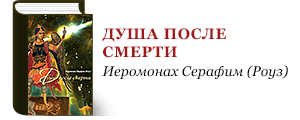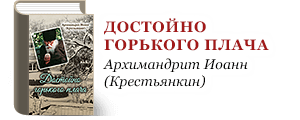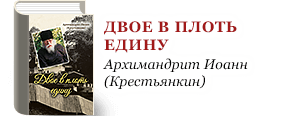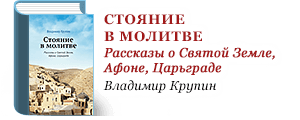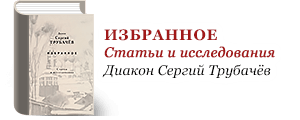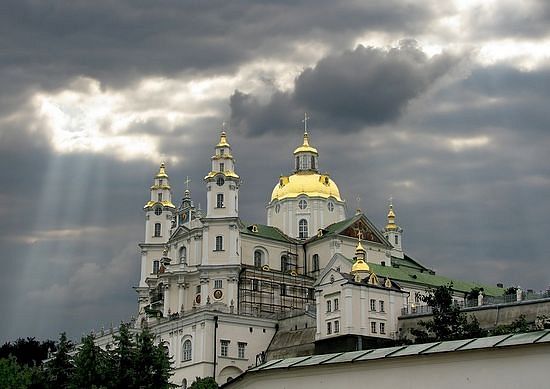 The Holy Dormition Pochaev Lavra
The Holy Dormition Pochaev Lavra
On this day, we commemorate the Synaxis of Saints of Volhynia—one of the most ancient domains of Christian Rus’, and now part of western Ukraine.
Volhynia was once of what the Russian chronicles call “Chervonnaya Rus”, which means literally “Red Russia”, brought to the Orthodox Christian faith in the time of Grand Prince Vladimir. Ravaged by Mongol Hordes, occupied by Poland-Lithuania, absorbed back into the Russian Empire under Catherine the Great, Volhynia returned briefly to Poland after World War I and then became part of the Soviet Union after World War II.
Despite its turbulent history, Volhynia is today largely Orthodox Christian. At the region’s Orthodox heart is one of the most revered monasteries of Russian and Ukrainian Orthodoxy, the Holy Dormition Pochaev Lavra.
 The Holy Dormition Pochaev Lavra
The Holy Dormition Pochaev Lavra
Many saints and righteous ones have come from Volhynia, but those commemorated by name on the feast of the Synaxis are:
St. Amphilochius, Bishop of Vladimir in Volhynia
St. Job of Pochaev
St. Juliana of Olshansk
St. Macarius of Kanev
St. Stephen, Bishop of Vladimir in Volhynia
St. Theodore (Theodosius, in monasticism)
St. Yaropolk, prince of Vladimir, Volhynia
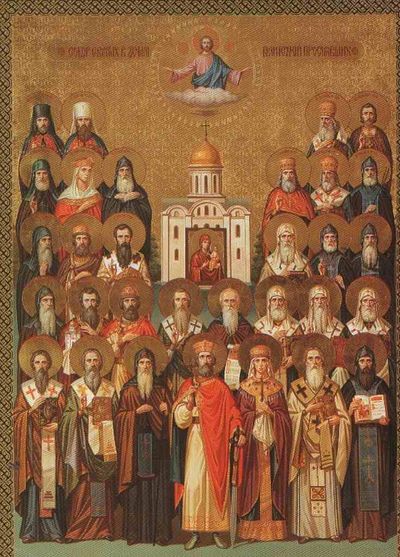 Synaxis of the Saints of Volhynia
Synaxis of the Saints of Volhynia
Christian Volhynia began in the diocese of Vladimir, named after the enlightener of Rus’ Grand Prince Vladimir, and one of its earliest saints was the bishop Amphilochius. We will begin the Lives of the saints of Volhynia with him.
St. Amphilochius the Bishop of Vladimir, in Volhynia
Also commemorated separately on October 10/23
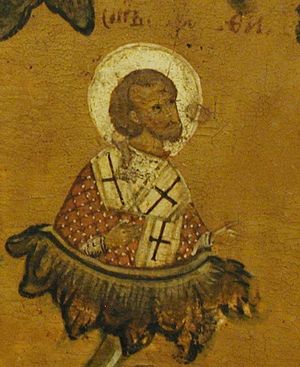 St. Amphilochius the Bishop of Vladimir, in Volhynia
St. Amphilochius the Bishop of Vladimir, in Volhynia
For seventeen years Bishop Amphilochius guided the Vladimir-Volhynia flock. Only a couple of generations separate his time from that of the Baptism of Kievan Rus, and the saint toiled tirelessly for the conversion of pagans to Christ. He also worked to root out pagan superstitions among the newly-baptized, while pacifying the strife among the princes of the region.
Resigning as hierarch, he continued his service to God in the Kiev Caves monastery, where he died in the year 1122. The October 10 celebration of his memory, together with the other holy hierarchs of the Volhynia region, was established in the year 1831, after the restoration of the Pochaev Lavra in Volhynia to Orthodoxy. (From OCA.org).
St. Job of Pochaev
Also commemorated August 28/September 10, October 28/November 10
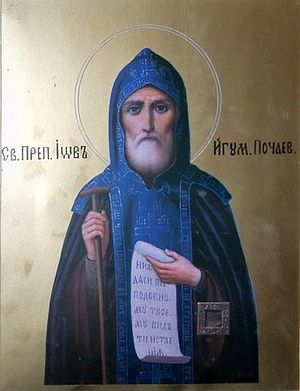 St. Job of Pochaev
St. Job of Pochaev
Around the year 1580, at the request of the renowned champion of Orthodoxy Prince Constantine Ostrozhsky, St. Job was appointed the head of the Exaltation of the Cross monastery near the city of Dubno, and for more than twenty years he governed the monastery amidst the growing persecution of Orthodoxy on the part of the Catholics and Uniates.
At the beginning of the seventeenth century, St. Job withdrew to Pochaev hill and settled in a cave not far from the ancient Dormition monastery, famed for its wonderworking Pochaev Icon of the Mother of God (July 23). The holy hermit, beloved by the brethren of the monastery, was chosen as their Abbot. St Job zealously fulfilled his duty as head of the monastery; kind and gentle with the brethren, he did much of the work himself, planting trees in the garden, and strengthening the waterworks at the monastery.
St. Job was an ardent defender of the Orthodox Faith against the persecution of the Catholics. Following the Union of Brest (1596), many Orthodox living in Poland were deprived of their rights, and attempts were made to force them to convert to Catholicism. Many Orthodox hierarchs became apostates to Uniatism, but St. Job and others defended Orthodoxy by copying and disseminating Orthodox books. Prince Ostrozhsky was also responsible for the first printed edition of the Orthodox Bible (1581).
In taking an active part in the defense of Orthodoxy and the Russian people, St Job was present at the 1628 Kiev Council, convened against the Unia. After 1642, he accepted the great schema with the name John.
Sometimes he would completely seclude himself within the cave for three days or even a whole week. The Jesus Prayer was an unceasing prayer in his gentle heart. According to the testimony of his disciple Dositheus, and author of the Life of St Job, once while praying in his cave, the saint was illumined by a heavenly light. St. Job reposed in the year 1651. He was more than 100 years old, and had directed the Pochaev monastery for more than fifty years.
The uncovering of St Job’s relics took place on August 28, 1659. There was a second uncovering of the relics on August 27-28, 1833. (From OCA.org).
St. Juliana of Olshansk
Also commemorated July 6/19
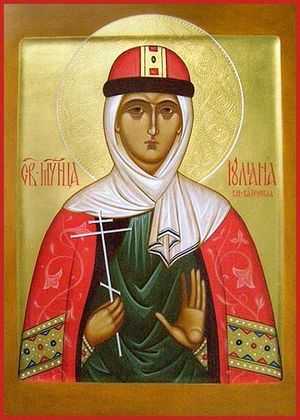 St. Juliana of Olshansk
St. Juliana of Olshansk
The holy relics were in a fire at the great church in the year 1718, and were put into a reliquary and placed in the church of the Near Caves.
St. Juliana appeared to Archimandrite Peter Moghila (afterwards Metropolitan of Kiev) in a dream, reproaching him for the carelessness and lack of respect shown to her relics. He ordered a new reliquary to be made, for which a suitable covering was made by pious nuns. On the reliquary was the inscription: “By the will of the Creator of heaven and earth Juliana, patroness and great intercessor to Heaven, rests here for all time. Here are the bones ... healing against all passions ... You adorn Paradise, Juliana, like a beautiful flower ...”
Many miracles have been worked by St. Juliana, and she helps those who venerate her holy relics with piety and faith. (From OCA.org)
St. Macarius of Kanev
Also commemorated May 13/20, September 7/26
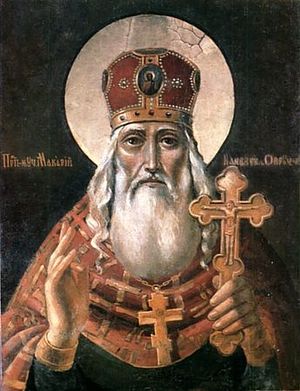 St. Macarius of Kanev
St. Macarius of Kanev
The holy Hieromartyr Macarius was born in 1605 in the city of Ovruch in Volhynia into the illustrious Tokarevsky family, renowned adherents of Orthodoxy. In the years between 1614-1620 the saint studied at the Ovruch Dormition monastery, and upon the death of his parents he became a monk at this monastery, having begun his service as a novice.
In 1625 St. Macarius, with the blessing of the archimandrite, left the Dormition monastery and was sent to the Pinsk bishop, Avramy, who assigned him to the Pinsk Kupyatichsk monastery. In 1630 he was ordained as hierodeacon, and in 1632 as hieromonk.
Fame about the excellence of the monastic life of hieromonk Macarius spread beyond the boundaries of the Kupyatichsk monastery, and in 1637 the brethren of the Bretsk Symonov monastery turned with a request to the abbot of the Kupyatichsk monastery, Hilarion (Denisevich), to send them St. Macarius to be their head. But the Kupyatichsk abbot also had need of hieromonk Macarius.
In 1637 the head of the Kupyatichsk monastery sent him to Metropolitan Peter Moghila of Kiev to hand over money collected by the brethren for the rebuilding of Kiev’s church of the Holy Wisdom, and for the solicitation of help for the construction and repair of damaged monastery churches. Seeing in the hieromonk Macarius a talented son of God’s Church, the Metropolitan issued him a certificate to collect offerings, and in 1638 appointed him head of the Kamenetsk Resurrection monastery (in Grodnensk district).
Until the pillaging and seizing of the monastery by the Uniates in 1642, St. Macarius guided the brethren of the Resurrection monastery. In these harsh times the brethren of the Kupyatichsk monastery elected St. Macarius as abbot, and he led the monastery until 1656. From 1656 through 1659, St. Macarius headed the Pinsk monastery, and from 1660 Archimandrite Macarius guided the brethren of his original Ovruch Dormition monastery.
More than ten years passed in constant struggle with the Latin Poles in Ovruch. Nothing could compel the brethren to quit the monastery, neither the seizure of the farmlands belonging to the monastery by the Dominicans, nor the rapacious pillaging of moveable property, nor beatings. Only in the year 1671, after the devastation of Ovruch by the Tatars, did the holy archimandrite Macarius leave the monastery, in which there remained not a single monk, and he went to the Kiev Caves Lavra.
But defenders of Orthodoxy like St. Macarius were needed not only at Kiev, but even more so outside of Kiev. Metropolitan Joseph (Neliubovich-Tukal’sky) assigned Archimandrite Macarius as head of the Kanev monastery. Thus, after thirty years of struggle with the Uniates, St. Macarius was again on the front lines of battle for the Orthodox Faith.
In 1672 Yuri, the son of Bogdan Khmel’nitsky, sought shelter at the Kanev monastery. The hetman Doroshenko petitioned Metropolitan Joseph for the assignment of St. Macarius, and repeatedly visited Kanev monastery. In 1675, Doroshenko switched his allegiance to Russia after renouncing allegiance to the Turks—evidently, not without counsel from St. Macarius.
In response the Turkish powers dispatched an army to Little Russia (Ukraine). On September 4, 1678, the aggressors rushed on the monastery. St. Macarius met the enemy with cross in hand at the entrance to the church. The Turks demanded that the monk hand over to them the monastery treasury. Hearing the monk’s answer that his treasure was in Heaven, the furious robbers hung the saint hand and foot between two posts.
After two days, on September 7, 1678, they beheaded the Hieromartyr. Witnesses to the martyric death of Archimandrite Macarius carried his body to the monastery church, in which they were hidden for safety. But the returning Turks placed firewood around the church and burned everything in the temple. When the surviving citizens of Kanev began removing the bodies of those who perished, only one body was found whole and as though alive. This was the body of the Hieromartyr Macarius, attired in a hairshirt, with a cross on his breast and another cross in his hand. The holy body was buried in this church beneath the altar on September 8, 1678.
The holy Hieromartyr Macarius was a man of highly righteous and spiritual life, glorified while still alive by miracles and the gift of clairvoyance. At Kanev, he healed the blind and the dying.
In 1688, during renovation of the temple, the grave of the Hieromartyr was opened, and the incorrupt body of the saint was found. In connection with the danger of invasion for the Kanev monastery, on May 13, 1688 the holy relics were solemnly transferred to the Pereyaslavl Regimental Resurrection Church, along with the hieromartyr’s beloved book, Discourse of St. John Chrysostom on the Fourteen Epistles of the Holy Apostle Paul (Kiev edition 1621-23) with his signature on one of the pages. Under Bishop Zachariah (Cornelovich) in 1713, the relics were transferred to a newly built temple of the Pereyaslavl Mikhailovsk monastery, and after its closing the relics rested at the Pereyaslavl Resurrection monastery from August 4, 1786.
In 1942, the relics were transferred to the Trinity church in the city of Cherkassa, and from 1965 they have been in the church of the Nativity of the Most Holy Theotokos in that same city.
Hieromartyr Macarius is separately commemorated twice: September 7/20, the day of his repose, and on May 13/26, the transfer of his holy relics. (From OCA.org).
St. Stephen, Bishop of Vladimir in Volhynia
Also commemorated April 27/May 10
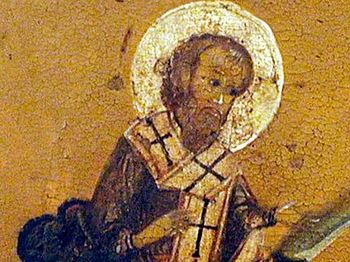 St. Stephen, Bishop of Vladimir in Volhynia
St. Stephen, Bishop of Vladimir in Volhynia
Before the death of St. Theodosius the monks asked him to appoint St. Stephen as abbot, who was the domesticus (chief arranger for the choir). “He grew up under your instruction,” they said, “and he served you. Give him to us.” So St. Theodosius transferred the guidance of the monastery to St. Stephen.
During his tenure as Superior, he laid the foundations of a spacious church in honor of the Dormition of the Most Holy Theotokos, begun under St. Theodosius. The cells of the brethren were moved near the new church. At the front of the place there were several cells for monks who were entrusted with burying the dead. They served the Divine Liturgy each day, and also commemorated the dead.
In 1078 St. Stephen was removed from office and driven from the monastery through the malice of an evil monk. He endured this meekly and without bitterness, and continued to pray for those who had turned against him.
St. Stephen learned that master builders had come from Greece with an icon of the Theotokos, and they told him of the appearance of the Heavenly Queen at Blachernae. Because of this, St. Stephen also built a church at Klovo in honor of the Theotokos (in memory of the Placing of Her Robe at Blachernae). The monastery was founded in thanksgiving for the solicitude of the Most Holy Theotokos for the Caves Monastery.
In 1091 St Stephen was made Bishop of Vladimir in Volhynia, and he participated in the transfer of the relics of St Theodosius from the cave to the monastery. He also labored to convert the inhabitants of Volhynia to Christianity.
St. Stephen died on April 27, 1094 during the sixth hour of the night. (From OCA.org).
St. Theodore (Theodosius, in monasticism)
Also commemorated August 11
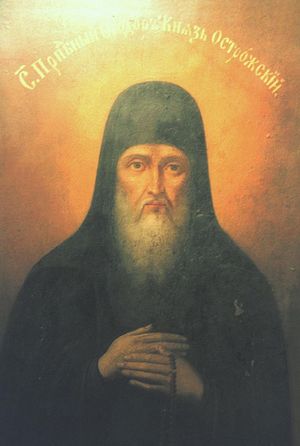 Saint Theodore, Prince of Ostrozh
Saint Theodore, Prince of Ostrozh
The first time the name of the holy Prince Theodore is mentioned is in the year 1386, when the Polish king Jagiello and the Lithuanian prince Vitovt affirmed his hereditary possession of the Ostrozh district, and they augmented the Zaslavsk and Koretsk surroundings.
In 1410 St. Theodore participated in the defeat of the Teutonic Knights of the Catholic Order at the Battle of Gruenwald. In 1422 the holy prince, because of sympathy for the Orthodox in Bohemia, supported the Hussites in their struggle with the German emperor Sigismund. Theodore introduced the Hussite formation (i.e., the Taborite, adopted by the Ukrainian Cossacks) into Russian military strategy.
In 1432, after winning a series of victories over the Polish forces, St. Theodore compelled Prince Jagiello to guarantee the freedom of Orthodoxy in Volhynia under the law. Prince Svidrigailo, apprehensive of the strengthening of his ally, locked St. Theodore into prison, but the people who loved the saint rose up in rebellion, and he was freed.
St. Theodore was reconciled with the offender and went to him for help in the struggle against the Lithuanians and the Poles. In 1438, the holy prince took part in a battle with the Tatars. In 1440, with the accession to the Polish throne of Cazimir, youngest son of Prince Jagiello, St. Theodore received the rights of administration of the city of Vladimir, Dubno, Ostrog, and he was granted extensive holdings in the best regions of Podolia and Volhynia.
St. Theodore left all this behind, together with princely power and fame. After 1441 he entered the Kiev Caves monastery, where he received the monastic tonsure with the name Theodosius, and struggled there for the salvation of his soul until the time of his blessed repose.
The year of St. Theodore’s death is unknown, but it is probable that he died in the second half of the fifteenth century at a great old age (S. M. Soloviev in his History of Russia gives the year of his death as 1483). The saint was buried in the Far Caves of St. Theodosius (He is also commemorated on the Synaxis of the Monastic Fathers of the Far Caves, August 28/September 10). His glorification apparently took place at the end of the sixteenth century, since in the year 1638 the hieromonk Athanasius Kal’nophysky testified that, “St. Theodore rests in the Theodosiev Cave, where his body was discovered incorrupt.” (From OCA.org).
St. Yaropolk, prince of Vladimir, Volhynia
Also Commemorated November 22/December 5
 St. Yaropolk
St. Yaropolk
Yaropolk journeyed on various missions for his father to the Polish king, the German emperor, and the Bishop of Rome St. Gregory VII (1073-1085). Upon the death of Great Prince Svyatoslav in 1078, Prince Izyaslav was restored to his principality, and Yaropolk received Vyzhgorod. After the death of his father, he was given as his appanage the city of Vladimir-Volhynia, from which the Rostislavichi attempted to displace him.
On the way from Vladimir to Zvenigorod-Galitsk, Yaropolk was treacherously murdered by Neryadets, one of his retainers (+1086). The murderer had been bribed by the Rostislavichi. The body of Yaropolk was transferred to Kiev and on December 5 was buried at the monastery of St. Demetrius in the Church of St. Peter, which he himself had begun to build. Many Church memorials, beginning with the Chronicle of St. Nestor, testify that the murdered Prince Yaropolk is to be venerated in the rank of saints well-pleasing to God. (From OCA.org).

